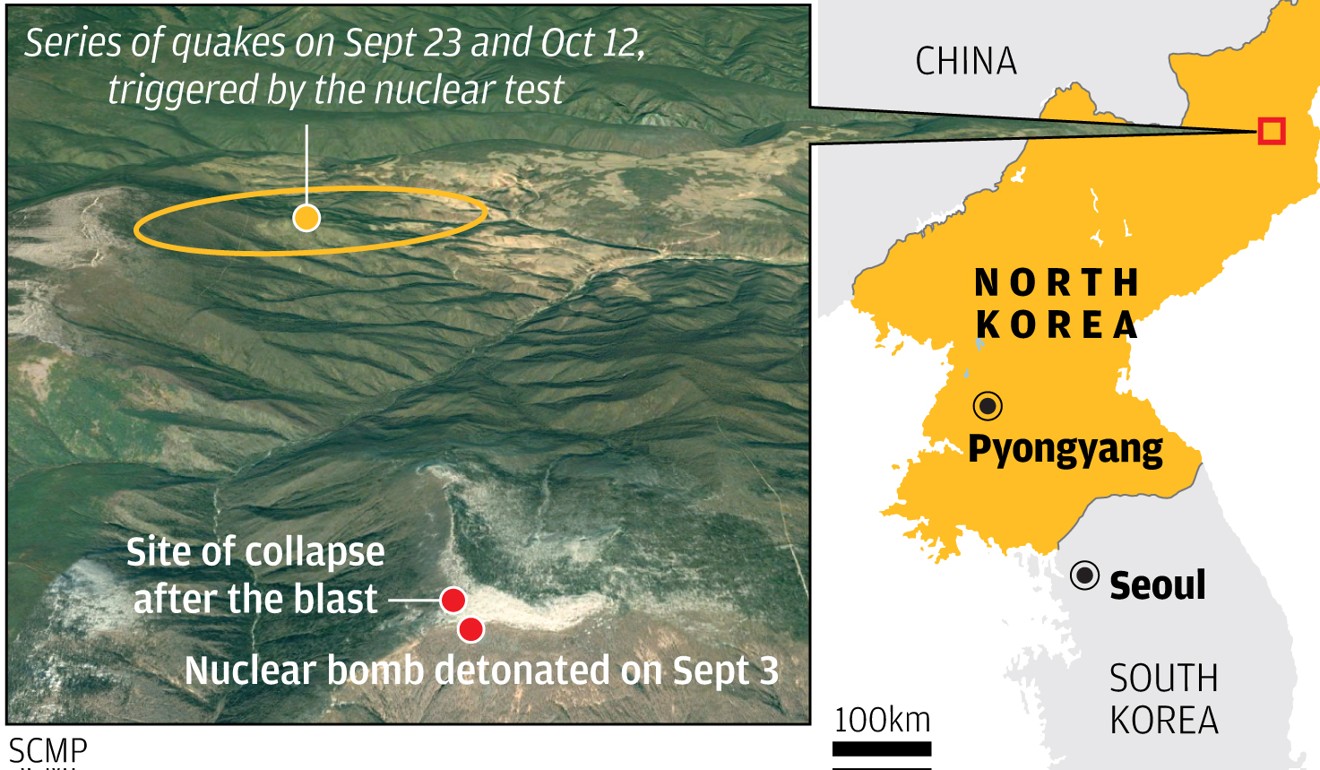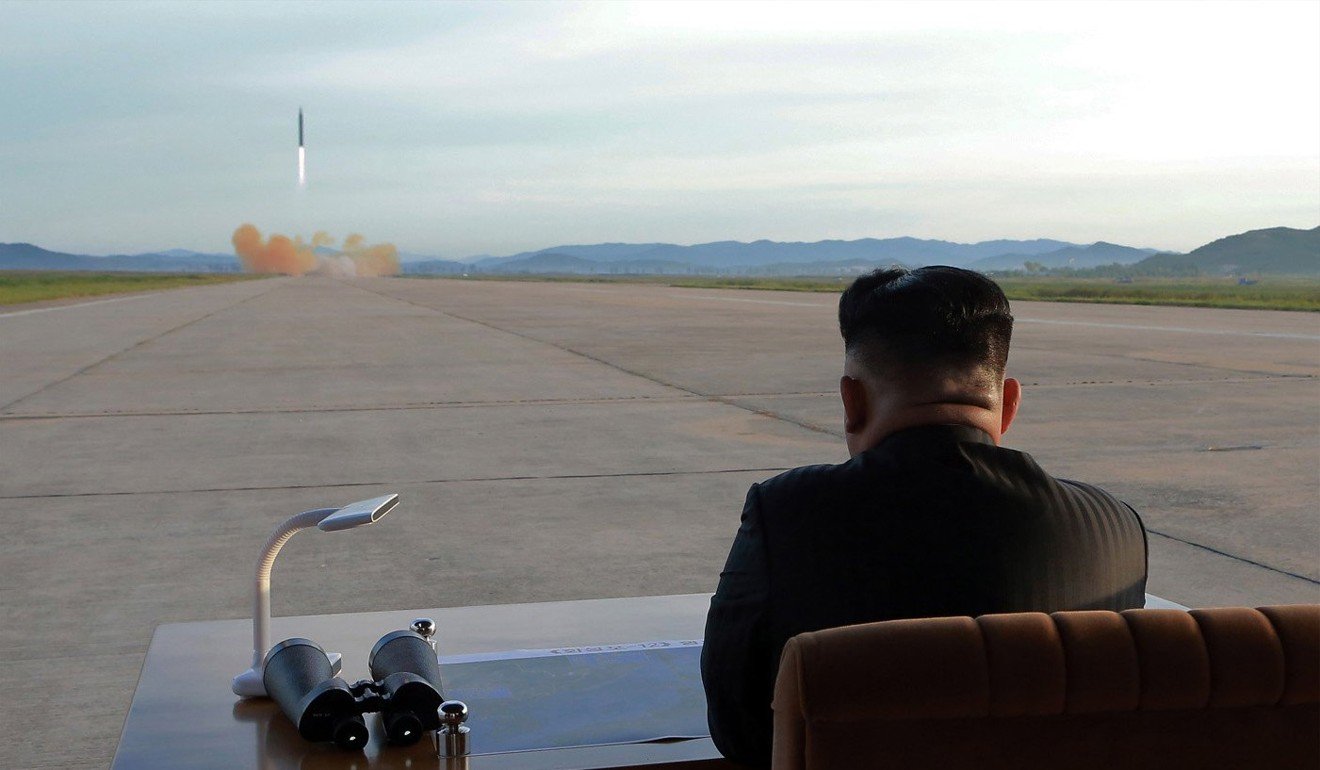And not because of some talks going on with South Korea. Much has been televised and written with regard to the talks going on with North Korea, the nuclear and missile program, normalizing relations with the South and introducing a peace agreement. Further, as we learned Mike Pompeo, the CIA Director met with the North Korean regime over Easter in an effort to determine some real truths and to gauge Kim Jung un with just how real all the reports are.
So, while we are told that missile tests and nuclear tests have been suspended, perhaps we know the reason why. Nuclear fallout.
About 200 people are feared dead in North Korea after underground tunnels at a nuclear test site that was feared to be unstable reportedly collapsed, crushing 100 people in the initial cave-in and 100 others when the tunnels again gave way on top of rescuers.
The collapse at the Punggye-ri test site on Oct. 10 occurred while people were doing construction on the underground tunnel, Japan’s Asahi TV reported, citing a source in North Korea. The television station also said North Korea’s sixth nuclear test on Sept. 3 most likely caused the tunnel to crumble and created serious damage in the region.
Mike Pompeo is a master with his poker face and his classified report on the meeting must be a doozy.
North Korea’s mountain nuclear test site has collapsed, putting China and other nearby nations at unprecedented risk of radioactive exposure, two separate groups of Chinese scientists studying the issue have confirmed.
The collapse after five nuclear blasts may be why North Korean leader Kim Jong-un declared on Friday that he would freeze the hermit state’s nuclear and missile tests and shut down the site, one researcher said.
The last five of Pyongyang’s six nuclear tests have all been carried out under Mount Mantap at the Punggye-ri nuclear test site in North Korea’s northwest.
Chinese scientists warn North Korea about disaster threat at nuclear test site
One group of researchers found that the most recent blast tore open a hole in the mountain, which then collapsed upon itself. A second group concluded that the breakdown created a “chimney” that could allow radioactive fallout from the blast zone below to rise into the air.
A research team led by Wen Lianxing, a geologist with the University of Science and Technology of China in Hefei, concluded that the collapse occurred following the detonation last autumn of North Korea’s most powerful thermal nuclear warhead in a tunnel about 700 metres (2,296 feet) below the mountain’s peak.
The test turned the mountain into fragile fragments, the researchers found.
The mountain’s collapse, and the prospect of radioactive exposure in the aftermath, confirms a series of exclusive reports by the South China Morning Post on China’s fears that Pyongyang’s latest nuclear test had caused a fallout leak.
Radioactive dust could escape through holes or cracks in the damaged mountain, the scientists said.
“It is necessary to continue monitoring possible leaks of radioactive materials caused by the collapse incident,” Wen’s team said in the statement.
The findings will be published on the website of the peer-reviewed journal, Geophysical Research Letters, likely next month.
North Korea saw the mountain as an ideal location for underground nuclear experiments because of its elevation – it stood more than 2,100 metres (6,888 feet) above sea level – and its terrain of thick, gentle slopes that seemed capable of resisting structural damage.
North Korea suspends nuclear and missile tests
The mountain’s surface had shown no visible damage after four underground nuclear tests before 2017.
But the 100-kilotonne bomb that went off on September 3 vaporised surrounding rocks with unprecedented heat and opened a space that was up to 200 metres (656 feet) in diameter, according to a statement posted on the Wen team’s website on Monday.
As shock waves tore through and loosened more rocks, a large section of the mountain’s ridge, less than half a kilometre (0.3 mile) from the peak, slipped down into the empty pocket created by the blast, leaving a scar visible in satellite images.
Wen concluded that the mountain had collapsed after analysing data collected from nearly 2,000 seismic stations.
Three small earthquakes that hit nearby regions in the wake of the collapse added credence to his conclusion, suggesting the test site had lost its geological stability.
Another research team led by Liu Junqing at the Jilin Earthquake Agency with the China Earthquake Administration in Changchun reached similar conclusions to the Wen team.
The “rock collapse … was for the first time documented in North Korea’s test site,” Liu’s team wrote in a paper published last month in Geophysical Research Letters.
The breakdown not only took off part of the mountain’s summit but also created a “chimney” that could allow fallout to rise from the blast centre into the air, they said.
North Korea nuclear test site has signs of ‘Tired Mountain Syndrome’ after five blasts
Zhao Lianfeng, a researcher with the Institute of Earth Science at the Chinese Academy of Sciences in Beijing, said the two studies supported a consensus among scientists that “the site was wrecked” beyond repair.
“Their findings are in agreement to our observations,” he said.
“Different teams using different data have come up with similar conclusions,” Zhao said. “The only difference was in some technical details. This is the best guess that can be made by the world outside.”
Speculation grew that North Korea’s site was in trouble when Lee Doh-sik, the top North Korean geologist, visited Zhao’s institute about two weeks after the test and met privately with senior Chinese government geologists.
US reveals how its forces would secure North Korea’s nuclear sites
Although the purpose of Lee’s visit was not disclosed, two days later Pyongyang announced it would no longer conduct land-based nuclear tests.
Hu Xingdou, a Beijing-based scholar who follows North Korea’s nuclear programme, said it was highly likely that Pyongyang had received a stark warning from Beijing.
Are North Korean quakes signs of instability at nuclear test site?
“The test was not only destabilising the site but increasing the risk of eruption of the Changbai Mountain,” a large, active volcano at China-Korean border, said Hu, who asked that his university affiliation not be disclosed for this article because of the topic’s sensitivity.
The mountain’s collapse has likely dealt a huge blow to North Korea’s nuclear programme, Hu said.
Hit by crippling international economic sanctions over its nuclear ambitions, the country might lack sufficient resources to soon resume testing at a new site, he said.
North Korea told its people Kim Jong-un visited China, but didn’t mention denuclearisation
“But there are other sites suitable for testing,” Hu said. “They must be closely monitored.”
Guo Qiuju, a Peking University professor who has belonged to a panel that has advised the Chinese government on emergency responses to radioactive hazards, said that if fallout escaped through cracks, it could be carried by wind over the Chinese border.
“So far we have not detected an abnormal increase of radioactivity levels,” Guo said. “But we will continue to monitor the surrounding region with a large [amount] of highly sensitive equipment and analyse the data in state-of-the-art laboratories.” More details here.










